
In June of 2014 I acquired a wild caught pair of Dendrobates tinctorius “Robertus” from Marcus Breece at Simply Natural Dart Frogs. They were brought in by Snakes at Sunset in May of 2014. These are my first wild caught animals, which I admit was a bit of a struggle for me. I hesitate to encourage the collection of wild animals, but after seeing no animals available after the 2013 import I wanted to get involved and help establish the morph.

My pair consists of a large female high yellow paired with a male high yellow. The 2014 import ranged from all blue animals similar to a Koetari River through yellow crested blue animals to the high yellows I have. In September of 2014 I acquired a pair and an extra male that I grouped as a 2.1. My hope is to get both groups going. It will be interesting to see if the high yellows breed true, or if this population is as variable as the import suggests.
Back to the main dart frog page
My group of Robertus dart frogs
Here are the five animals I picked up in two transactions over the summer of 2014. They are currently housed in two 18x18x24 Exoterras as a 1.1 and a 2.1. Most animals are “high yellow” though the second female is more blue than the other animals.

The 1.1 is housed in the vivarium on the left, and the 2.1 is housed in the vivarium on the right:


Selected photos
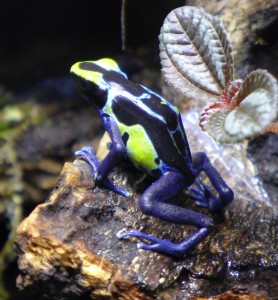




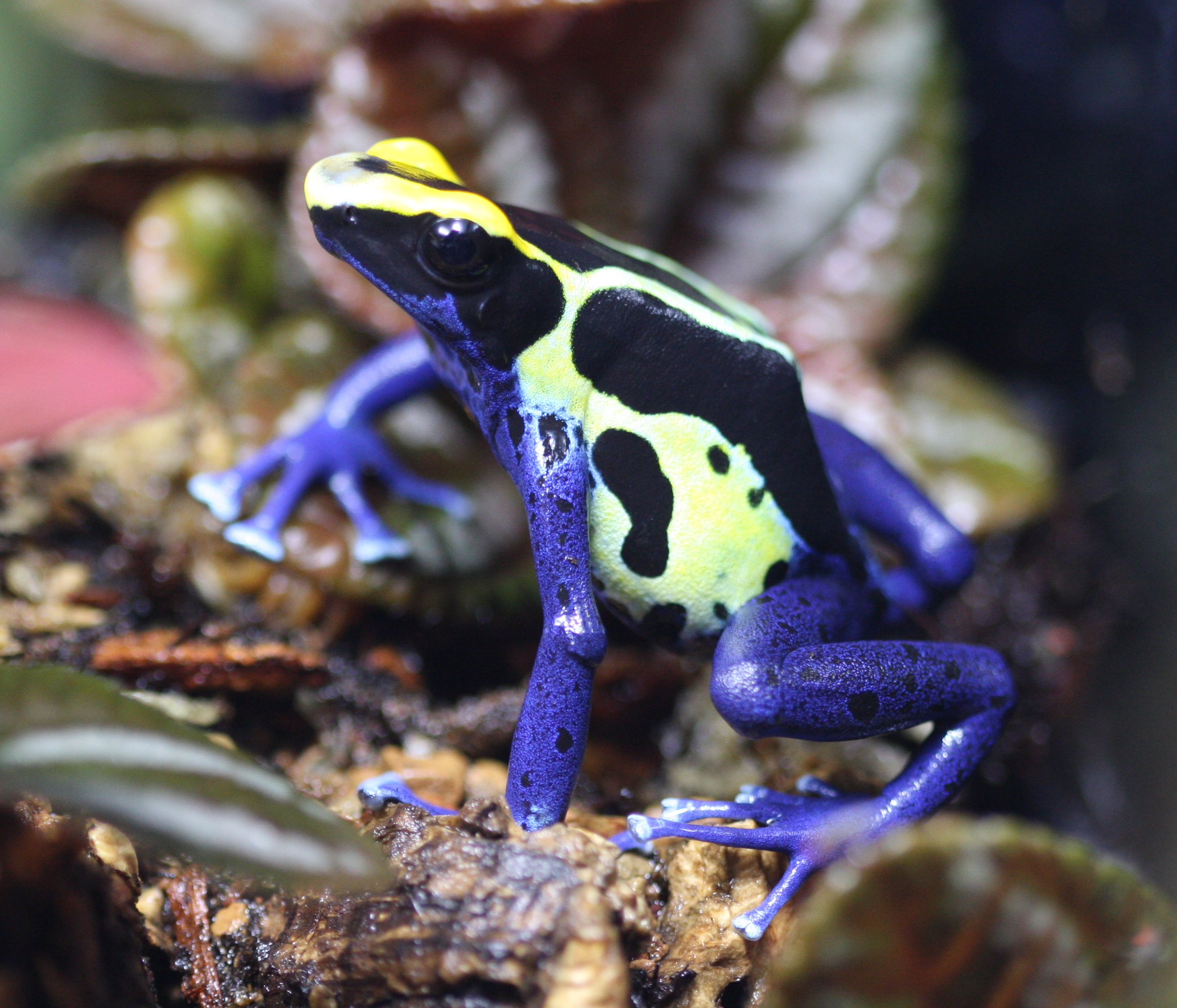






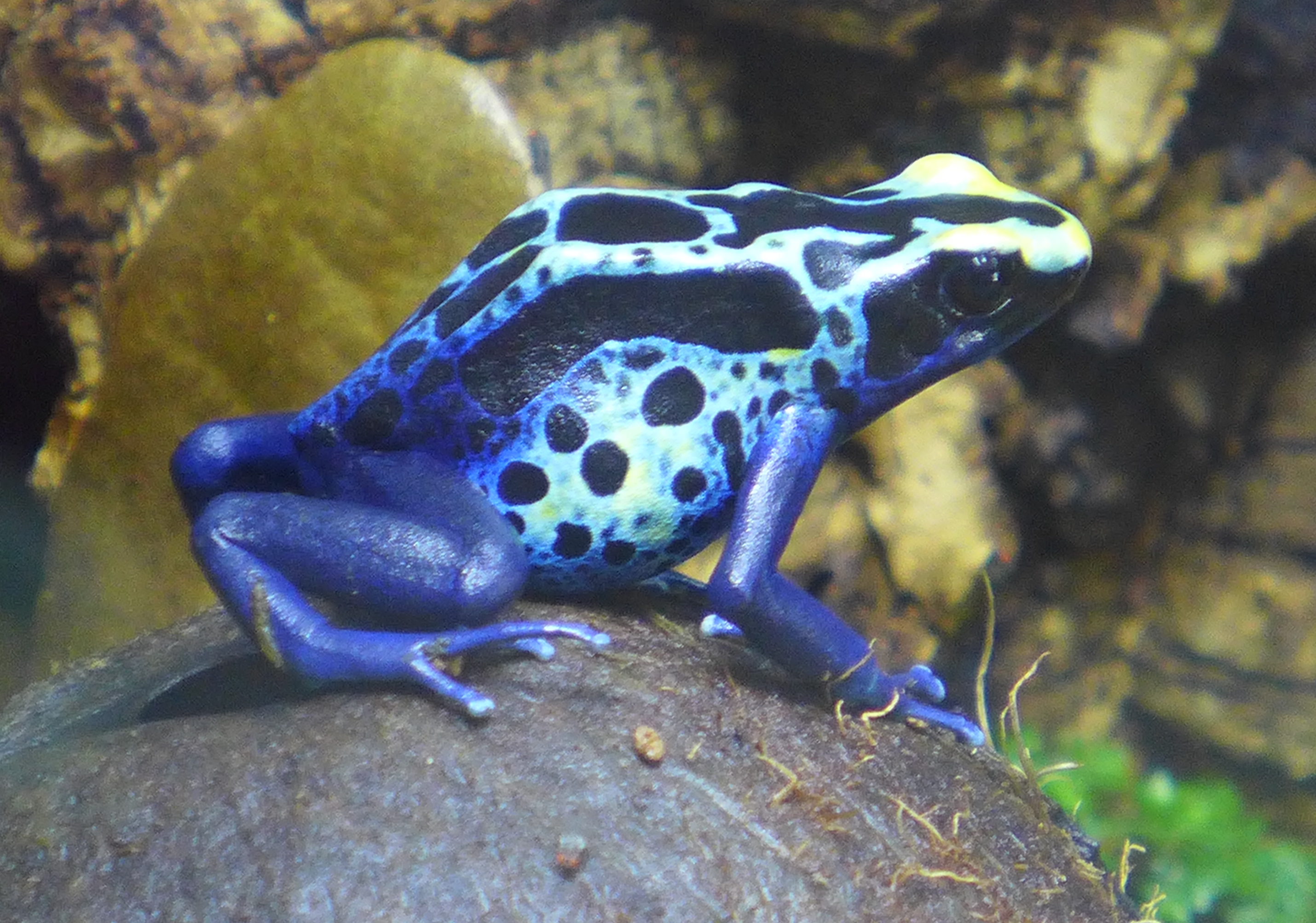




Dendrobates tinctorius “Robertus” coloration
Dendrobates tinctorius “Robertus” female dart frog
The Robertus female lost weight in the week leading up to shipment to me, but overall, she arrived healthy and is eating well. Here’s another series of images of the Robertus female on QT intake:





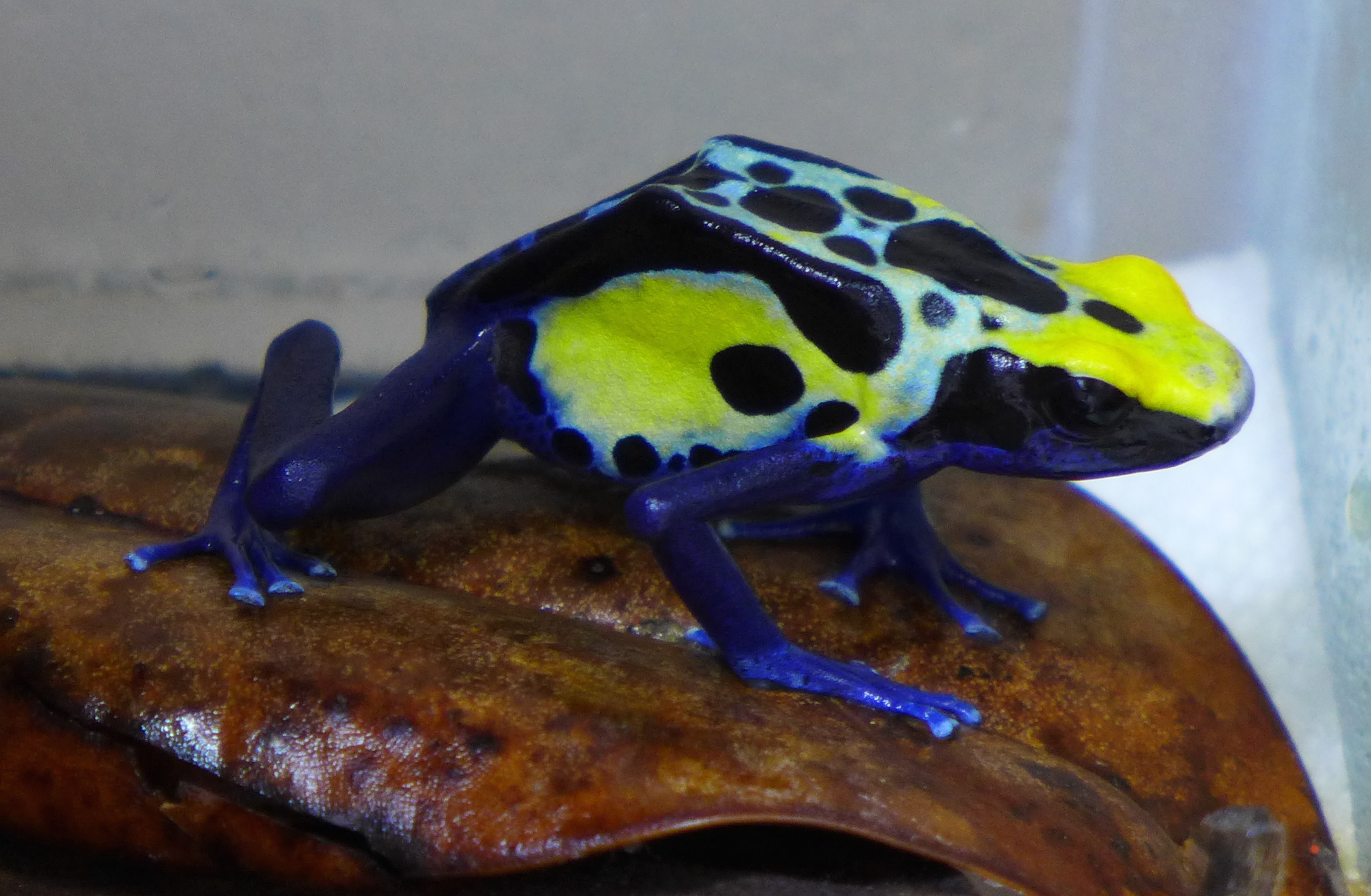
D. tinctorius “Robertus” male dart frog
The Robertus male is doing well, and demonstrates the classic Robertus coloration (yellow crest and splash of yellow on the side) of the limited photos that have been circulated to date:
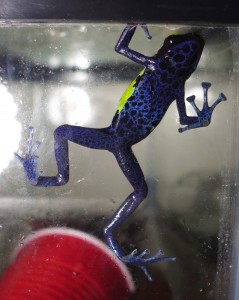




“Robertus” high yellow dorsal & ventral images
Though both of my Dendrobates tinctorius “Robertus” specimens show varying degrees of yellow coloration, their bellies are consistently blue with black spotting, though spotting on the female is less pronounced.


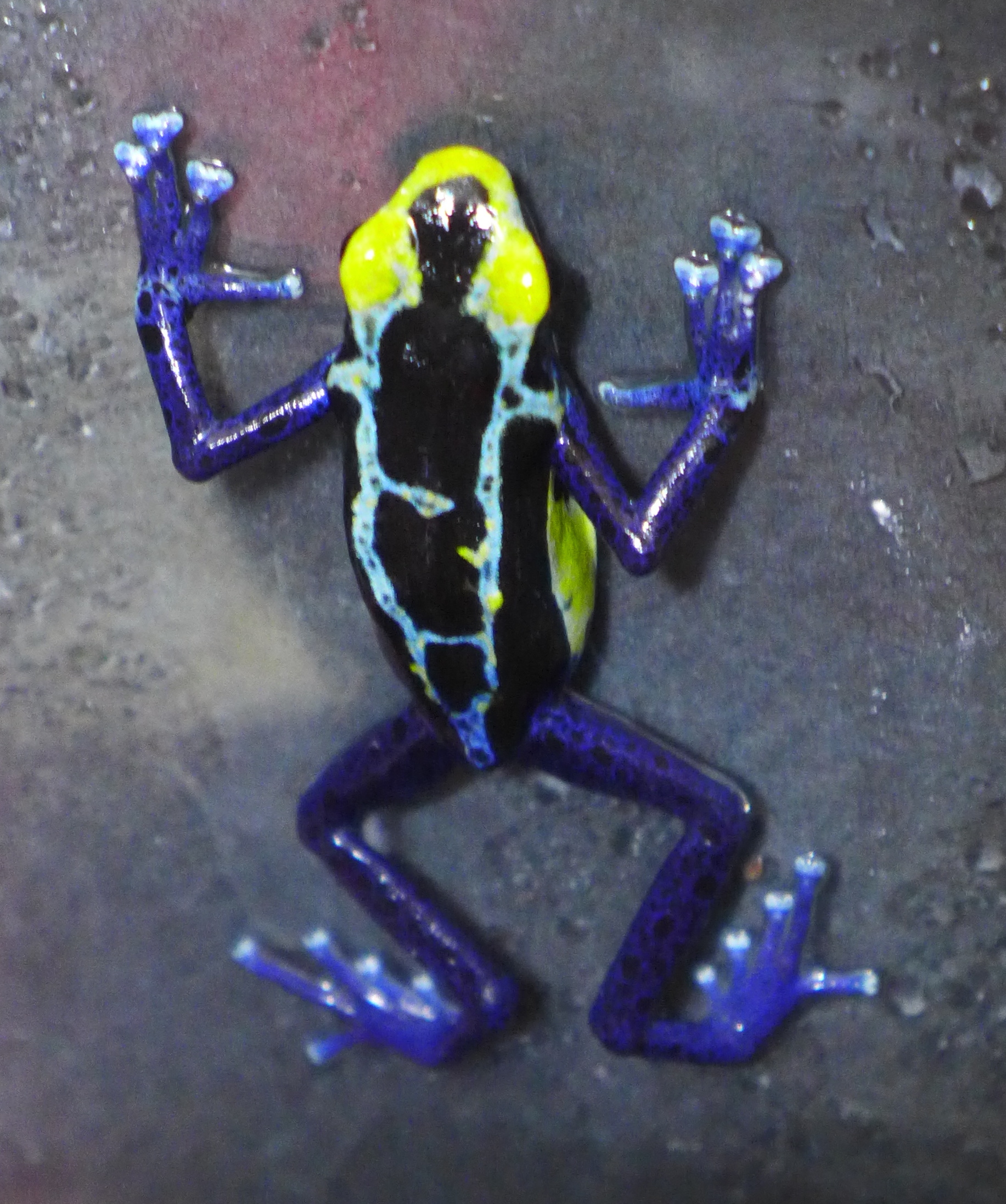
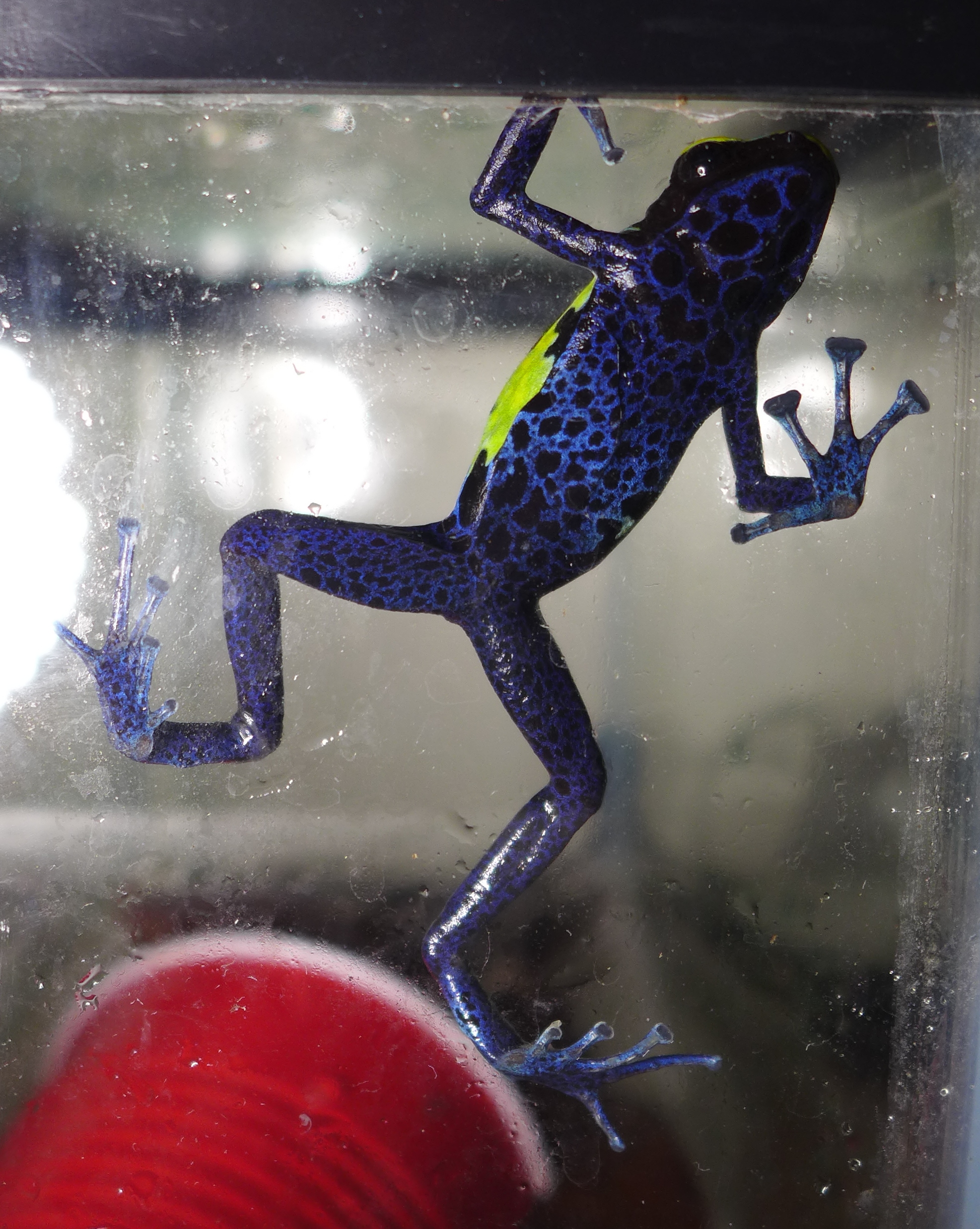
Variability in D. tinctorius “Robertus” coloration
There were approximately 12 pair of Dendrobates tinctorius “Robertus” in this import. They showed remarkable variability in their coloration, ranging from solid blue through high yellow. Marcus Breece at SNDF provided me with photos of many of the pairs that were imported and I created a gradient image illustrating the variability of this import. (photos courtesy of Marcus Breece, Simply Natural Dart Frogs):

Initially I would have described Robertus coloration as blue webbing with a yellow crest and yellow splashes on the sides, however, as you look closer, there are variable yellow “flecks” of color on their backs within the blue webbing, and even the sides of the high yellow female have hints of light blue outlines fading to white:
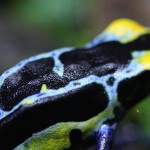
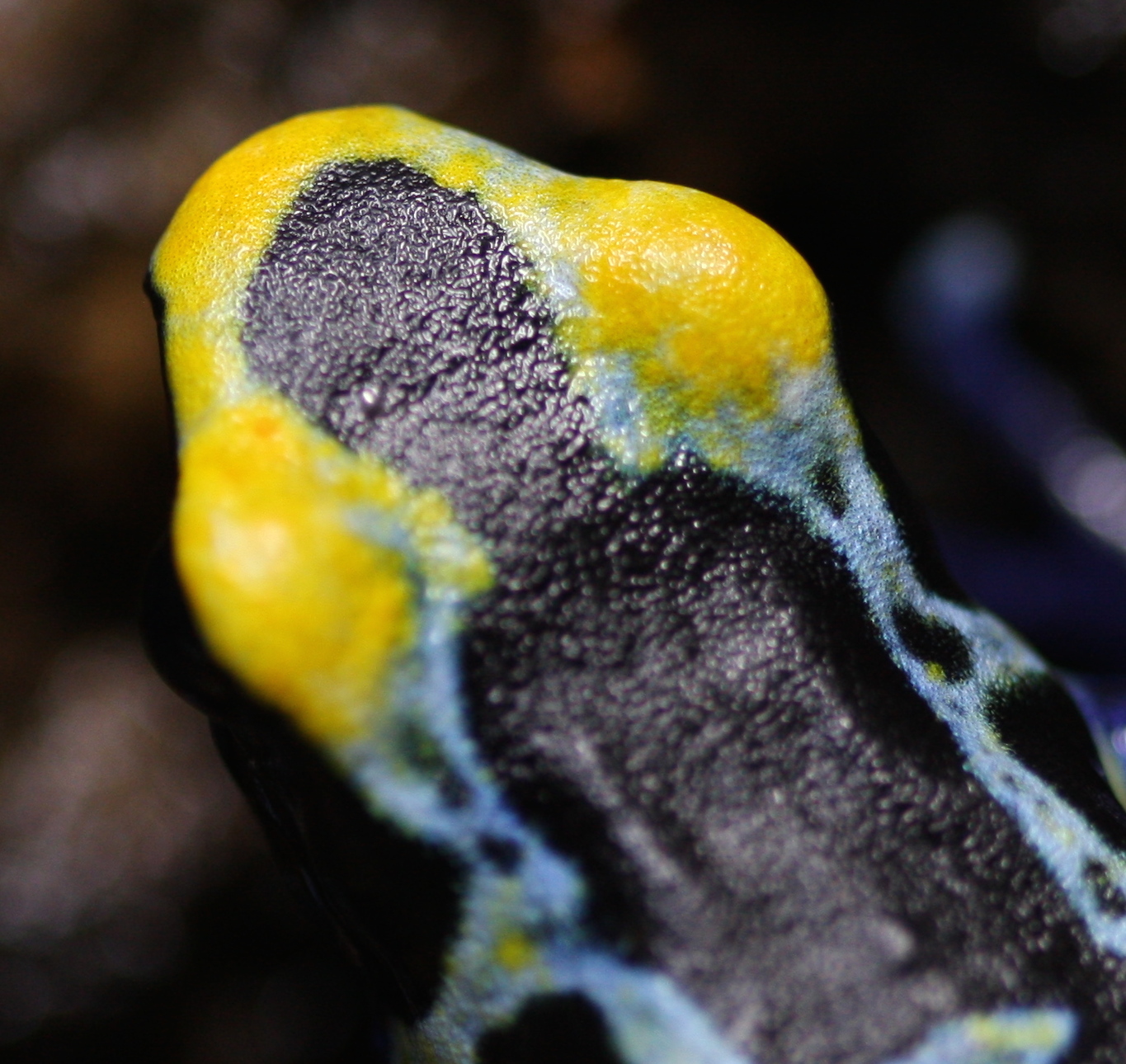


Their bellies range from nearly solid blue in the female (left) to heavily spotted blue and black on this male (right):




Dendrobates tinctorius “Robertus” SVL
The female Robertus that I acquired is fairly large for a tinc. I have included two images illustrating her SVL in inches (just short of 2″) and millimeters (approximately 50 mm):

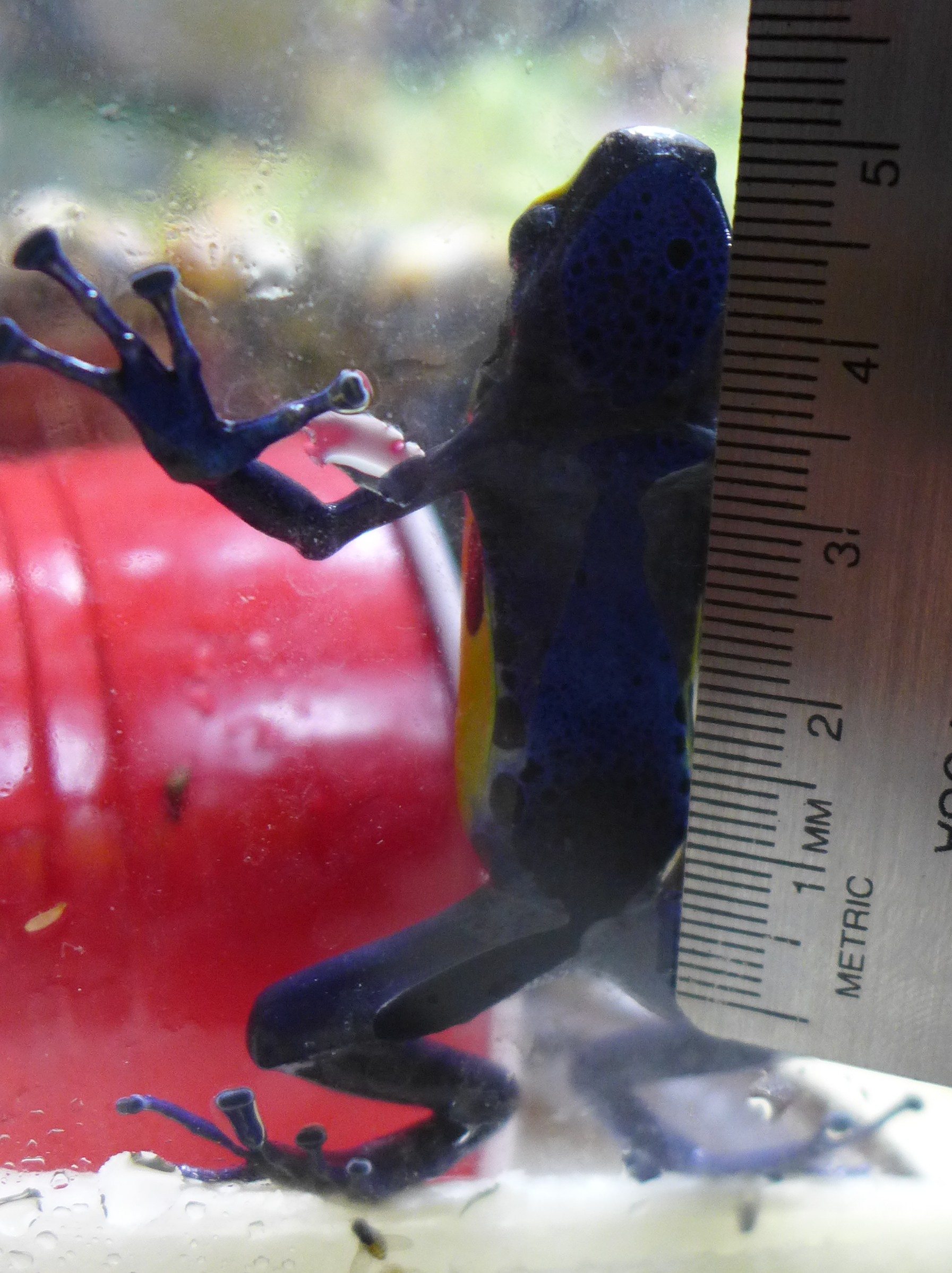
Wild Caught “Robertus” dart frog intake and QT log
I thought it would be interesting to share my experiences on acquiring, quarantining, treating and incorporating wild caught dart frogs into my collection. This is my first pair of wild caught animals, so I have been nervous about any impact on my captive bred (CB) animals. I’ll update this periodically until the Robertus pair are in their final vivarium.
- 2014-06-16 :: purchased wild caught Dendrobates tinctorius “Robertus”
- 2014-06-17 :: frogs shipped from importer (Snakes at Sunset, Miami) following QT and treatment by Marcus Breece (SNDF)
- 2014-06-18 :: frogs received. Both animals swabbed for BD and RV, swabs mailed same day. Placed in separate QT containers, paper towel substrate, washed magnolia leaves and split red solo cup hides.
- 2014-06-20 :: 1st BD and RV results back – negative for both animals.
- 2014-06-21 :: Meds from Dr. Frye arrived. Fresh Panacur to continue prophylactic treatment that was started by SNDF, and Silversulfadiazene to treat a nose bruise / rub. I also purchased Baytril and Metronidizole since I was shipping medication already and I may need to treat for additional parasites. I am planning on shipping out initial fecals in two days.
- 2014-06-22 :: both animals continue to eat well. The female is continuing the gain weight. The male has filled out nicely. I was able to measure the female today – 50 mm SVL. They both began using their 1/2 solo cup hides today.
- 2014-06-23 :: collected first round of fecal samples. Overnighted to Dr. Frye. Switched animals to new QT containers with fresh paper towel substrates. Dosed with next round of Panacur. Placed 2 by 1/2 solo cup hides in each QT container with magnolia leaf litter on top. Used black construction paper to black out the sides of the tank for added privacy. I did leave the glass between isolation tanks open so the frogs could see each other. Applied SSD to females nose.


- 2014-06-24 :: first set of fecal exams were negative. Male is eating well. Female is still skittish and taking flies less aggressively. Applied SSD to females nose again.
- 2014-06-25 :: exchanged notes again with Dr. Frye on the female’s nose rub. We agreed it was best if we move her to the enclosure with the male, continue the daily SSD treatment and add Metronidizole as an appetite stimulate to her treatment regiment.
- 2014-06-26 :: spoke at length with Glenn on the female and we agreed she was deteriorating and likely stressed by the QT environment. We decided it was best to move the pair into their permanent enclosure to see if having a well planted environment with hides and a more natural look and feel would help settle her. I also decided to stop captures for medicating her as it seems to be too stressful.
- 2014-06-27 :: the pair is feeding well and acting more natural in their vivarium. The female is looking much improved, and I believe water access has greatly contributed to her improved condition.






- 2014-06-28 :: continuing to eat and do well. The male is filling out quite nicely. He’s been soaking but not calling. Marcus suspects he’s ready to breed. Hopefully the female will continue to put on weight and catch up. I’ve included an image of the male soaking below.



- 2014-06-29 :: the pair continue to roost in the cork bark hollow. They have been alternating between feeding and soaking briefly in their false bottom access pool. They have been more active in the viv foraging for food. Overall, the move to the full viv have improved the female and she appears to be putting on weight.


- 2014-07-01 :: not much to report other than the female continues to regain weight and look more and more like a robust female tinc.
- 2014-07-02 :: today was a good day. The female is noticeably larger after having a very aggressive feeding session. Today was the first day where she was more aggressive taking flies than the male. I’m going to repeat some thumbnails side by side to illustrate the improvement from 6/23 to 6/29 to 7/2 – about 10 days from moving out of QT into a planted viv.



- 2014-07-04 :: female continues to regain weight. She looks quite good. Including two pictures of the female left and center, and a picture of the male on the right:



- 2014-07-13 :: it’s been a while between updates. Everything has been going well and the female seems to have fully recovered to a stable weight. Her nose rub seems to be getting better without specific treatment.


- 2014-07-19 :: the female’s nose rub is improving. I have not been treating the rub – I have chosen to leave her alone to feed and recover on her own. I am happy with her progress. Here are the before and after shots from 6/24 and 7/19:


- 2014-12-08 :: it has been some time since I posted on the female’s recovery. She has thrived and put on substantial weight. She has demonstrated breeding behavior, but to date the male has not shown interest. During the time that has passed I added three more Robertus (2.1) to my collection with the hope of breeding them.



Housing Dendrobates tinctorius “Robertus” dart frogs
I’ve built out an 18x18x24 Exoterra vivarium for this pair of Dendrobates tinctorious “Robertus”. I’ve incorporated a large cork round stump feature with a natural opening that I am attempting to leverage as a bower. I glued on a ledge under the entrance for easier access. All the hardscaping uses cut cork bark siliconed to the vivarium glass.


I used a cork bark bulk head out front with several staggered smaller pieces to achieve a sloped ramp into a pool that leverages the false bottom for tad rearing.

Here’s a series of shots of the cork bark round on the right side of the viv that contains the hollow the pair roosts in at night. There is a small ledge that I siliconed outside the entrance for easier entry. The female has not had any issues scaling the log to enter the hollow. I used a smaller cork flat further down the interior of the round to create another cave at the base of the round. I filled most of the cavity with Turface, then used ABG and leaf litter as bedding. The upper portion of the round is open, though I have set some pilea clippings on top for cover.




Vivarium photos :: Robertus dart frog pair (1.1) December 2014



Vivarium photos :: Robertus dart frog group 2 (2.1) December 2014
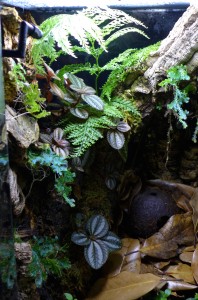


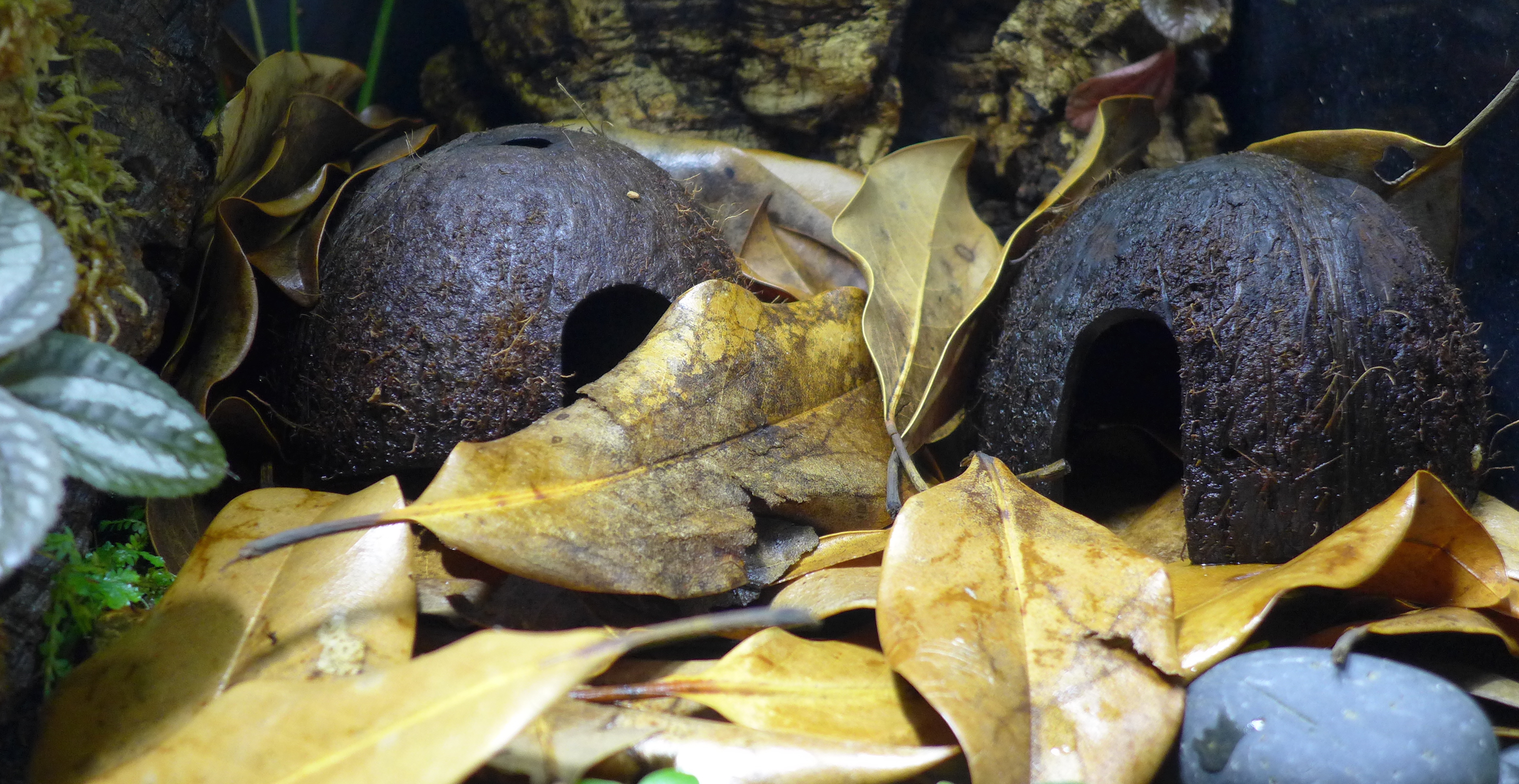
Breeding Dendrobates tinctorius “Robertus” dart frogs
The main goal of bringing in WC animals is to work to develop a CB program and establish the morph in the hobby. Personally I feel any animal deserves the best possible housing, so I’ve created a display quality vivarium for this uncommon pair of frogs.























